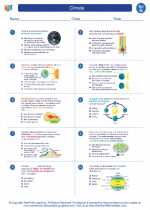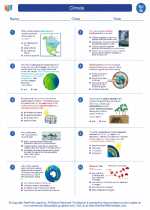Heat Energy
Heat energy is a form of energy that is transferred between objects due to a difference in temperature. It flows from an object with a higher temperature to an object with a lower temperature. The transfer of heat energy can occur through conduction, convection, or radiation.
Conduction
Conduction is the transfer of heat energy through direct contact between particles of matter. This can occur in solids, liquids, or gases. In solids, such as metal, heat is transferred through the vibration of atoms and the collision of free electrons.
Convection
Convection is the transfer of heat energy through the movement of fluids (liquids or gases). This is commonly seen in fluids when warmer, less dense fluid rises and cooler, denser fluid sinks, creating a cycle of circulation that transfers heat energy.
Radiation
Radiation is the transfer of heat energy through electromagnetic waves. This can occur through empty space and does not require a medium. An example of radiation is the heat energy from the sun reaching the Earth.
Effects of Heat Energy
Heat energy can cause changes in the state of matter, such as melting, boiling, or evaporation. It also affects the expansion and contraction of materials. Additionally, heat energy is essential for many chemical reactions to occur.
Study Guide
- Define heat energy and explain how it is transferred.
- Describe the three methods of heat transfer: conduction, convection, and radiation.
- Provide examples of each method of heat transfer in everyday life.
- Explain the effects of heat energy on the state of matter and materials.
- Discuss the importance of heat energy in various processes and systems, such as the Earth's climate and technological applications.
Understanding heat energy is important for comprehending various natural phenomena and human-made processes. It plays a crucial role in fields such as physics, chemistry, engineering, and environmental science.
.









